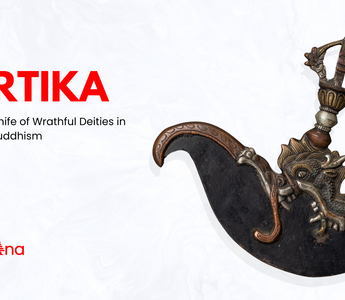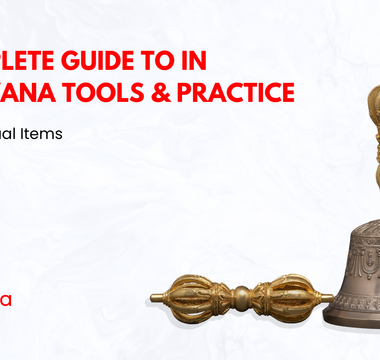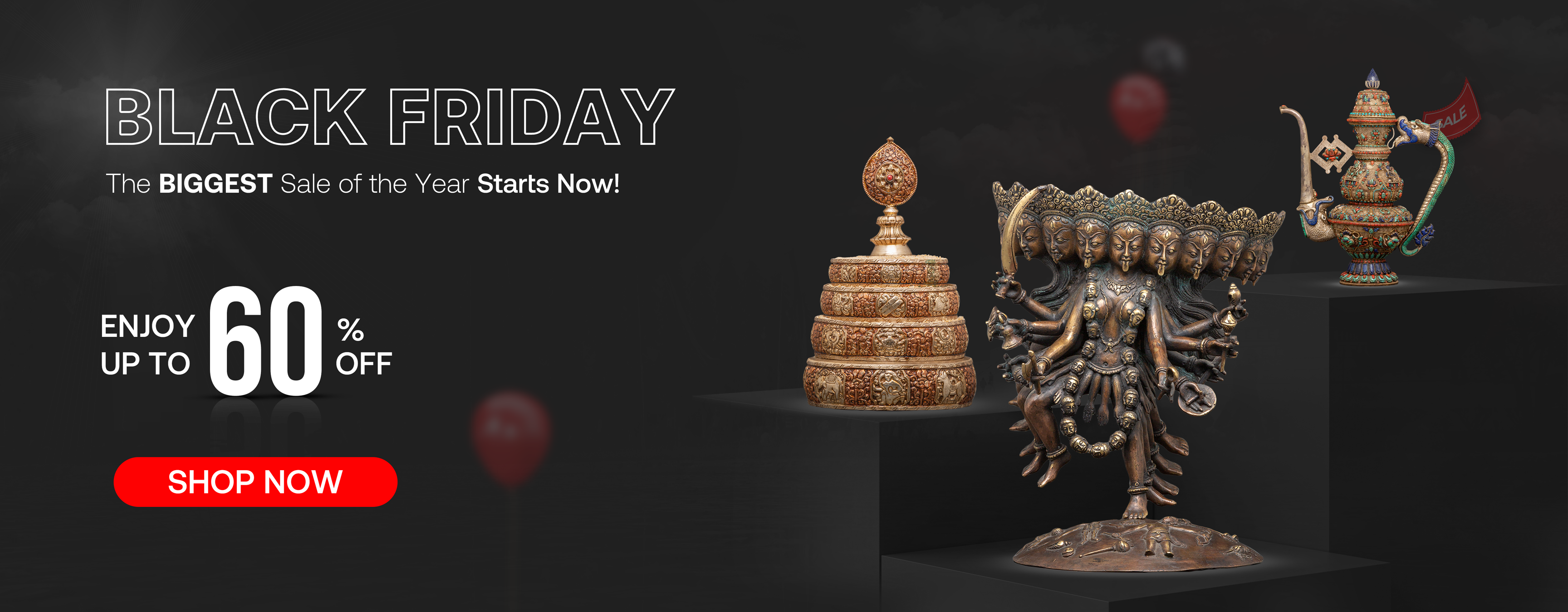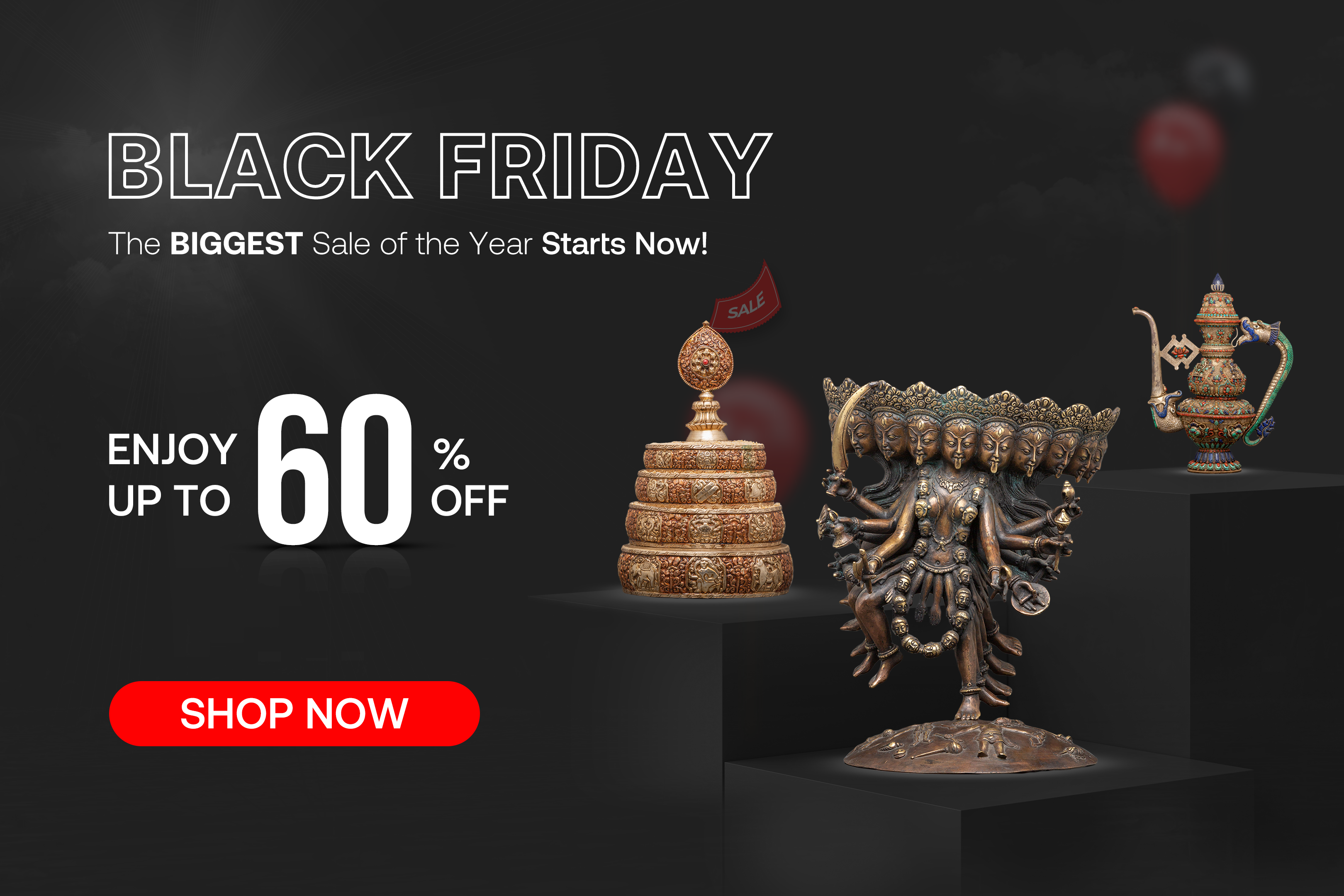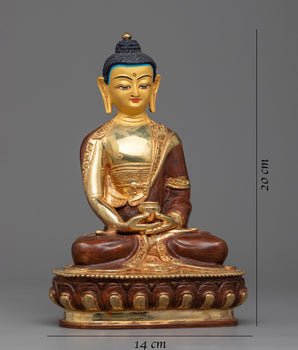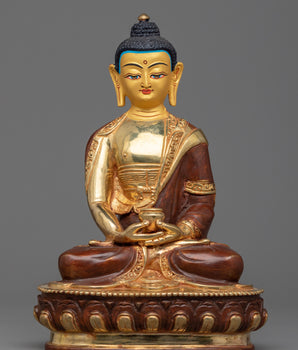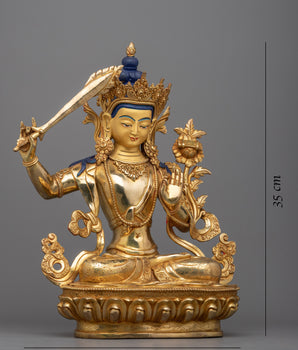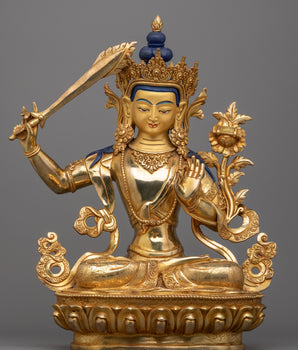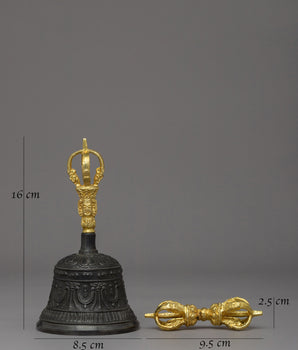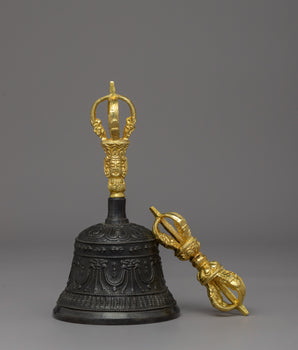In the mystical and powerful world of Vajrayana Buddhism, ritual implements are more than just sacred tools—they represent the transformation of negative energies and the cutting through of ignorance. Among the most significant of these ritual tools is the Kartika, a crescent-shaped ritual knife that holds deep symbolic power.
The Kartika is commonly associated with wrathful deities—fierce yet compassionate figures who embody the power to sever attachments and help practitioners overcome obstacles on their spiritual path. In this blog, we’ll explore the Kartika's symbolism, the deities who wield this sacred weapon, and how these figures guide practitioners on their journey to enlightenment.
What Is the Kartika?
The Kartika is a ritual knife that symbolizes the act of cutting through ignorance and transforming negative emotions and attachments. The crescent-shaped blade represents the destruction of false perceptions and the severing of attachments that bind practitioners to the cycle of samsara (the cycle of birth, death, and rebirth).
In Vajrayana Buddhism, the Kartika is not just a tool of destruction but a symbol of transformation. It helps practitioners cut through mental delusions, negative emotions, and attachments to the material world, bringing them closer to the realization of emptiness and wisdom. Held by powerful wrathful deities, the Kartika represents the power of compassionate destruction, the kind that frees beings from suffering and clears the path to enlightenment.
Understanding The Elements of Kartika:
The kartika (Sanskrit: कर्तिका; Tibetan: གྲི་གུག་ drigug) is one of the most visually rich ritual implements of Vajrayāna Buddhism. Each component—from blade to handle—embodies layers of symbolic meaning that reflect both the fierce and compassionate nature of tantric wisdom.

Spiritual Kartika Knife : View Details
1. The Blade: Crescent of Severance
The blade of the kartika is crescent-shaped, resembling a half-moon. This curve represents the cyclical nature of saṃsāra—the endless turning of birth, death, and rebirth. The downward-pointing, inward-curving edge signifies the act of cutting through illusion and ego, severing attachment to worldly delusion and ignorance.
The blade’s heavy, dark metal suggests not a tool of harm but of transformation. Its weight and curvature evoke the precision and power required to slice through the deepest layers of ignorance—what tantric texts call the “two obscurations”: afflictive emotions (klesha-avarana) and cognitive distortions (jnaya-avarana).
The Dragon Motif: Dynamic Compassion
The dragon head carved at the juncture of the blade and handle is a powerful Tibetan symbol of enlightened activity. The dragon embodies primordial energy—both protective and transformative. In the kartika’s design, the dragon’s open mouth and curling mane represent the fearless voice of truth, roaring to dispel the mists of ignorance.
This dragon imagery is not universal but distinctly Himalayan. It merges the tantric concept of fierce compassion with native Tibetan mythic guardianship. Thus, the dragon does not destroy but purifies; it transforms ignorance into wisdom.
The Handle: Vajra of Indestructible Wisdom
Atop the dragon’s head rises a vajra—the thunderbolt scepter symbolic of indestructible wisdom. The vajra handle completes the metaphysical circuit: while the blade cuts through illusion, the vajra represents what remains—the immutable reality of emptiness (śūnyatā).
In ritual art, the vajra handle often has four or five prongs, indicating the five wisdoms (pañca-jñāna) or the union of wisdom and method (prajñā-upāya). The fusion of vajra and blade reflects the ultimate tantric insight: compassion and wisdom act together to liberate beings.
Materials and Color
Traditional kartikas are crafted from iron or bronze, often inlaid with copper, silver, or gold. These materials themselves hold esoteric associations—iron for steadfast strength, copper for transformation, and gold for enlightenment. The mixed metals signify the alchemical process of transforming base impulses into pure awareness.
Symbolic Use in Art and Practice
The kartika is frequently paired with the kapāla, or skull cup, held in the other hand of deities such as Vajrayoginī, Nairātmyā, and Ekajaṭī. Together, they represent the complete tantric path: cutting away defilements (kartika) and transforming them into nectarous wisdom (kapāla).
When held by wrathful deities—such as Vajrayoginī, Mahākāla, or the dākinīs—the knife affirms their role as compassionate agents of transformation, severing ignorance to liberate all beings.
Wrathful Deities Who Hold the Kartika
In Vajrayana Buddhism, the Kartika is wielded by several deities who embody the qualities of fierce compassion, wisdom, and liberation. Here are some of the most prominent deities depicted with the Kartika.
Kagyu Mahakala
Mahakala is one of the most well-known protective deities in Tibetan Buddhism. His role is to guard the Dharma (Buddhist teachings) and protect practitioners from spiritual harm. Kagyu Mahakala is one of the prominent deities depicted holding the Kartika, which symbolizes his power to cut through ignorance and destroy obstacles on the path to enlightenment.
The Kartika is used to sever attachments, cut through delusions, and eliminate negative influences that bind practitioners to samsara (the cycle of birth, death, and rebirth).
Vajrayogini
-
Iconography: Vajrayogini is often depicted holding the Kartika in her right hand and a skull cup (Kapala) in her left. This pairing symbolizes the union of wisdom and method, essential for spiritual transformation.
-
Role: As a central figure in Vajrayana practice, Vajrayogini embodies the path of transformation and the realization of emptiness. The Kartika she holds represents the severance of ego and attachment, facilitating the practitioner's journey toward enlightenment.
Vajravārāhī
-
Iconography: Vajravārāhī is depicted holding a curved knife (Kartika) in her right hand and a skull cup in her left. She is often shown with a sow's head above her right ear, symbolizing victory over ignorance.
-
Role: As a wrathful deity, Vajravārāhī represents the transformative power of wisdom and compassion. The Kartika in her hand signifies the cutting through of delusions and the liberation from the cycle of samsara.
Sacred Kartika Collection: Handcrafted Ritual Knives
1. Ritual Copper Kartika with Crystal:

This is a remarkable Tibetan artifact, expertly crafted for spiritual ceremonies. Standing at 29.5 cm in height and 20.5 cm in width, this ceremonial knife is made from high-quality copper, showcasing intricate filigree work that highlights exceptional craftsmanship. The beautifully designed hardwood handle, adorned with turquoise, coral, and crystal stones, embodies the essence of Tibetan spiritual traditions, offering both visual elegance and profound cultural significance.


